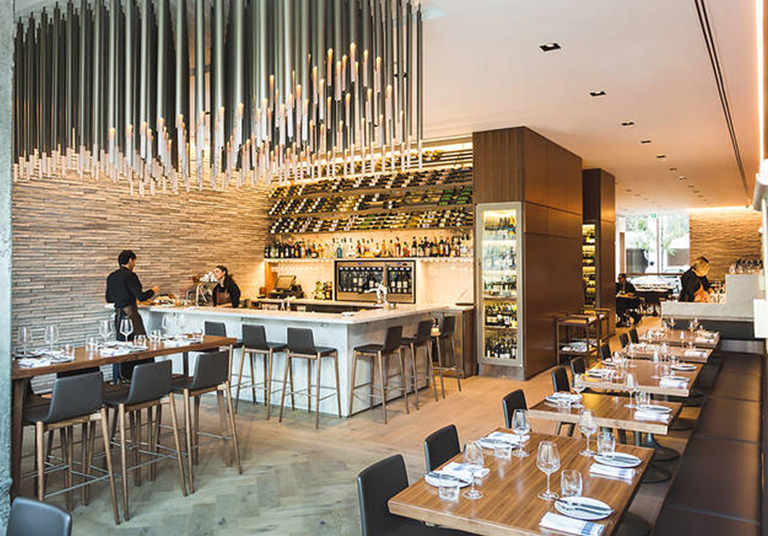
Shono has been fascinated by fire before in his installation for Noor Riyadh, The Mind Ship Exodus (2021), he created the illusion of fire and movement by projecting a film of the churning sea and burning wires onto a heap of twisted, tangled steel. Inside the four-metre-long slanted trough On This Sacred Day, painted in Shono’s signature jet-black colour, the artist burns palm tree leaves, their vapour releasing a musky scent into the air. Shono, who lives in Riyadh, also used smell to evoke the lived experience of life in the valley. Talin Hazbar's' Earth Readings' plays audio recordings of people's favourite sites in the valley. The smell of the earth - the dry, dusty smell of the mountains, mixed with the sweeter scent of the farmyard - immediately evokes the landscape the locals took inspiration from. She also recorded the memories she heard, and the audio of these memories can be heard as visitors approach the artwork or move through it.

Using techniques she honed on the residency, she created small mudbricks, some of them marked by the co-ordinates of the site (in other cases, she was asked to leave the location anonymous), and created a structure of two walls that narrow towards a thin aperture, just wide enough for visitors to pass through. Hazbar, who was born in Aleppo and was trained at the American University of Sharjah in architecture, took earth from the sites she was taken to. She was taken to dozens of nooks and crevices and heard stories of nostalgia, loss and peace.įirst NFT art forum to launch in Saudi ArabiaĪnother local took Hazbar to a sheltered site where he would find the headspace to read books that he could not otherwise concentrate on, amid his busy home life. Photo: Royal Commission for AlUla (RCU)įor her work Earth Readings, Hazbar asked local residents about their most special, intimate, or favourite space in the valley.

Talin Hazbar conducting a workshop in mudbrick construction methods. At the end of the rocky drive to the main road lies the commercial life of AlUla garages, cafes and open-front shops, whose stories and items wound their way into the artists’ works themselves. Rows of tall trees provide near-total shade and roosters crow in the background at one point, a flock of goats passed desultorily by the circular audio installation set up by Sellies, without even a second glance at the congregation of loudspeakers. The show is situated in the palm groves surrounding the small, family-run Mabiti hotel. In February, three weeks after the residency ended, they returned to launch the exhibition. But by the end of the six weeks the artists all had an idea in mind of what they wanted to do - and wanted to show their work back to the community. Producing an artwork was not a stated goal of the residency. AlShashai gave an introduction to contemporary art, focusing on its psychology.įrench artist Sara Favriau conducts a workshop on anthotype methods of printing. Favriau taught anthotype methods of printing and Hazbar on working with mudbricks. In return, the artists gave lectures on their practices.

Locals taught the artists traditional palm weaving and dyeing techniques, while a French botanist from Afalula lectured on the vegetation in the valley. The artists were invited to stay for 11 weeks at the Mabiti AlUla hotel and were part of a roster of regular meetings and workshops that fall under the ungainly technical term “knowledge transfer”. It began as a pilot programme for a residency, organised by French group Manifesto alongside the Royal Commission for AlUla and the French Agency for AlUla development, or Afalula. “It’s where the locals settled and remain.”Ī group photo with the members of The Oasis Reborn art residency. “The oasis is the heart of AlUla,” says Nora Aldabal, the arts and creative planning director at the Royal Commission of AlUla. Titled The Oasis Reborn, the show focuses on the community life in the AlUla valley, among its long-term residents and newly arrived experts. About 50,000 people live in the valley, and the population is growing as AlUla becomes a major development site.Īnd while Desert X AlUla, the flagship exhibition of the 2022 AlUla Season, leans into the extraordinary character of the landscape, a more modest show runs concurrently, with works by Rashed AlShashai and Muhannad Shono from Saudi Arabia Sara Favriau and Laura Sellies from France and Talin Hazbar and Sofiane Si Merabet, who both live in the UAE. Once criss-crossed by ancient civilisations, now it is quiet and spectacular.īut the AlUla oasis also contains a string of small towns, from the heritage sites at Hegra to Al Jadidah, just north of the medieval AlUla old town. It is easy to think of the sandy, windswept canyons of Saudi Arabia’s AlUla, dotted with empty, ancient tombs, as long since abandoned to the elements.


 0 kommentar(er)
0 kommentar(er)
